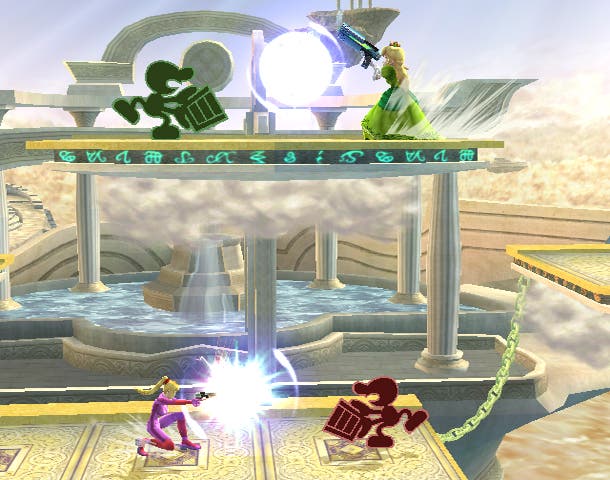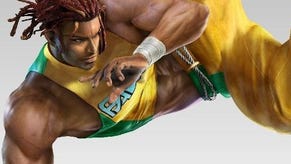Super Smash Bros. Brawl
Fantastic.
Sheltering all this functionality and balance together like heart-patterned umbrellas are more than enough modes. There's Brawl, the basic two- to four-player fight mode; Special Brawl, the less basic alternative where you can apply various modifiers (speed, gravity, permanent hats, etc.); Tourney, an elimination-based tournament, startlingly; Rotation, where up to 16 people can fight in sequence; and the option to fight as teams within them. That's before we get on to the single-player/co-op stuff. Subspace Emissary may be the dominant bit, but Classic mode still lets you fight a sequence of enemies, punctuated by mini-games and culminating in the usual encounter with series badguy Master Hand; Events mode tasks you with completing specific goals, like collecting dragon pieces and fighting a metal Dedede; and Stadium mode lets you tackle the throwaway mini-games like Home-Run Contest individually.
What else? There's a Stage Builder, where you can design levels out of simple components, save them and share via WiiConnect24; the Vault, where all your trophies and unlockable objects (music! stickers! etc!) reside; and online multiplayer.
This is a first for Smash Bros., obviously. You can play against randomers, waiting for them in a warm-up room where you can mash Sandbag around; you can input Friends codes to play with people you actually know; and Spectator mode allows you to watch other people on the Internet and bet gold coins on the match outcome. With no contextual information, like performance records and names, it's basically guesswork, so you usually go for the guy with the character buried deepest in the game, but its inclusion - while ultimately pointless - does at least save you turning the game off while you eat your supper. We had no lag in any of this, playing on a usually robust DSL connection, and only the typical Wi-Fi Connection caveats apply: communication is limited to stock phrases and built-in d-pad taunts, and Friends codes are cumbersome.

There are other complaints. Subspace Emissary is longer than ideal, meaning you won't get to play as some of the biggest novelties for a good while, and the quality of the cut-scenes and level designs here is inconsistent - there are a few clever conceits, but levels also drag on unnecessarily, with doors as red herrings and other minor frustrations. Control is also a little imprecise overall - there are four schemes available, taking in Wiimote, Wiimote and nunchuk, Cube pad and Classic controller, but none is without minor grievances - and particularly in single-player, where performing big leaps and landing them is fine but small positional movements from standstill are fiddly.
However, control and structural quirks will struggle to compromise your long-term entertainment - and Brawl really does offer that. It's consistently satisfying over long periods, fulfilling its usual role of dominating a willing crowd's evening into the early hours, and now allowing you to sustain that after everyone's gone home using the Internet. Really the only reason you wouldn't feel that way would be if you didn't stick with it past the dizzying first quarter of an hour, or if you don't like Nintendo characters - and if you don't in either case then you probably aren't reading this anyway, and the prospect of Triforce-smashing your friends to death won't mean anything. Otherwise, persist, and enrich yourself, and wonder where on earth it all goes next.
















